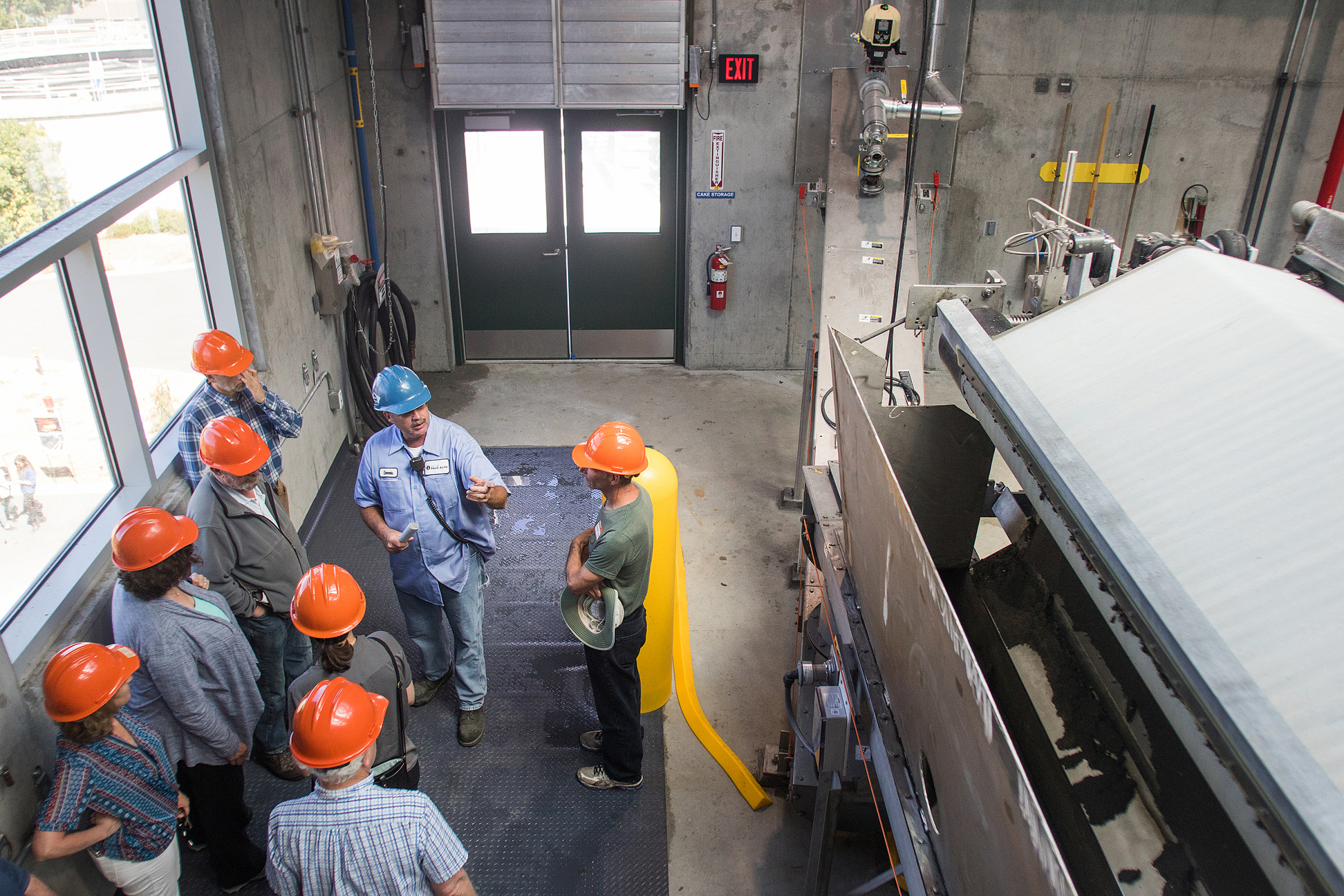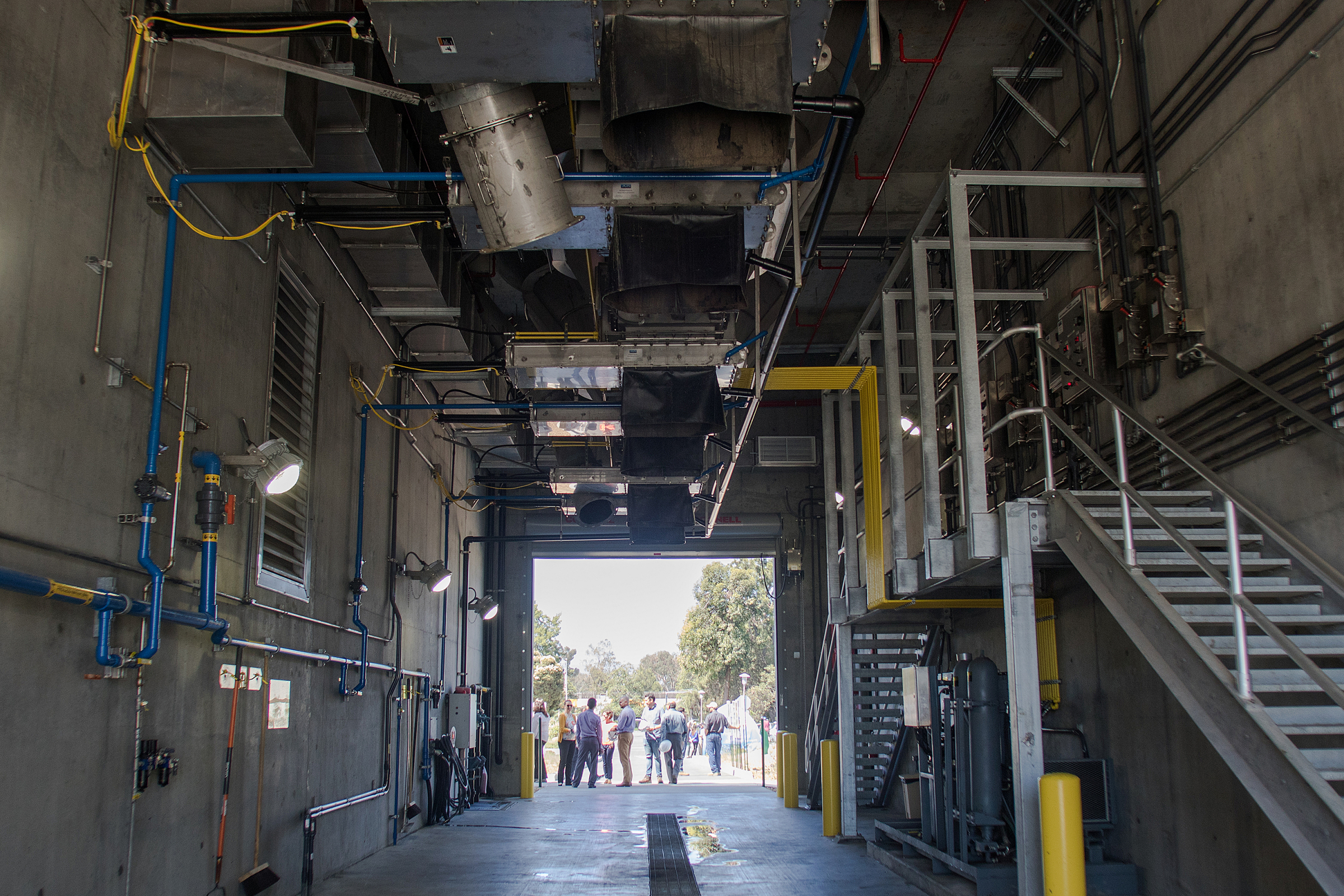Seeking to modernize aged equipment and cut down on the nitrogen that flows into the San Francisco Bay, Palo Alto and its partners are embarking on an ambitious makeover of the Regional Water Quality Control Plant, a project that will cost $193 million and take about five years to complete.
The City Council is preparing to approve next month a $161 million contract with Anderson Pacific Engineering Construction to upgrade the wastewater treatment system at the regional plant on Embarcadero Road, near the Baylands. It will also consider additional contracts for design and engineering services and for construction management, raising the overall costs of the colossal project to $193 million.
The project would be funded through a state loan and costs will be shared by Palo Alto and its partners in the plant: Mountain View, Los Altos, Los Altos Hills, Stanford University and the East Palo Alto Sanitary District.
The Baylands plant is one of 38 that surround and deposit nitrogen into the bay, plant manager Jamie Allen said Tuesday as the council's Finance Committee was preparing to sign off on the project. Collectively, they contribute about 50,000 kilograms of nitrogen per day, with Palo Alto's plant comprising about 4.5% of that amount, or roughly 2,239 kilograms per day.
A key goal of the upgrade is to reduce this outflow of nitrogen, which causes algae to bloom in the bay, Allen said. Over the summer, the a red algae bloom across the region killed fish throughout the area.
"We contribute the nutrients that, in the right climatic conditions, when the winds are low and there is a lot of light penetration in the bay, algae can feed exponentially on the nitrogen that's there."
Wastewater makes up the largest share, or about 65%, of the total nitrogen deposit into the bay, Allen said. The rest comes from delta and agricultural runoff (20%) and 15% from urban runoff.
The biological treatment process that is currently in the plant was installed in 1972 and consists of four concrete aeration basins and allows bacteria to break down and remove organic compounds in the wastewater. The system is supported by an air blower room and pump stations, equipment that delivers air and recirculates sludge as needed, according to a report from the Department of Public Works. The current system does not, however, treat nitrogen, which has become a growing priority around the region given the period of toxic algae bloom.
"All the treatment plants, all of us collectively as a Bay Area population, are contributing to the nitrogen that can push the bay to a tipping point," Allen told the committee.
The report notes that some of the equipment in the current treatment system, which also includes a power generator, electrical switchgear and motor control centers, is between 28 and 50 years old and "beyond its useful life." The upgrade includes replacement of the aged equipment and other capital improvements, including construction of a new headworks facility and relining of an aging joint intercepting sewer, according to the report.
The city and its partners have been planning the project for about a decade. It is included in the long-range plan that the city approved in 2012 for the regional plant. The partner agencies approved the design for the new treatment system in 2018 and they concluded the environmental review process in 2021. Last month, the city received bids from three companies to construct the improvements and staff recommended choosing Anderson, the lowest bidder.
The Finance Committee endorsed the recommendation on Tuesday, with Mayor Pat Burt saying that he is excited about the project finally moving ahead.
"This is a project that we've been waiting to move forward on for a long time and I'm really enthusiastic about both investing in this critical infrastructure that's overdue to have the investment, and the improved quality that the system will provide," he said.
The project will likely include an increase to local wastewater rates, though the exact amount is yet to be determined. That said, Burt noted that local rates remain relatively low when compared to neighboring cities. Palo Alto's monthly rate, according to staff, was just under $50 for a single-family residence in October 2020. A survey by city staff showed that in other area cities, including San Carlos, Belmont, Brisbane and South San Francisco, it was about $100. Hillsborough was an outlier with bills of about $275.
"When we look at big dollar amounts, everyone says, 'Oh my gosh!' but we've been incredibly competitive and below most of the other jurisdictions," Burt said.
Palo Alto and Mountain View will pay the greatest share of the costs, which are allocated based on total wastewater flows. The two cities make up 38.1% and 37.9% of the wastewater flows, respectively, and will pay the proportionate amount of the costs, which would be about $2.77 million for Palo Alto and $2.75 million for Mountain View annually. The other four partners each make up less than 10% of the wastewater flows and will pay between $114,598 (Los Altos Hills) and $686,861 (Los Altos) per year.
The Mountain View City Council approved the project unanimously at its Tuesday night meeting. The Palo Alto council will consider approving the contracts on Dec. 5. If plans stay on track, construction would begin this January and be completed by November 2027.




Comments